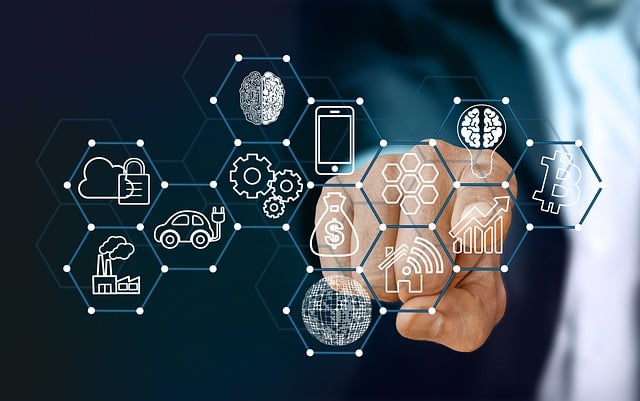The future of personal safety is driven by cutting-edge technologies like AI, IoT, and wearable tech, leading to innovative solutions. Emerging products include smart home security systems, adaptive body armor, and stylish wearables with location tracking, fall detection, and medical alerts. These trends transform protection gear into connected, responsive systems, addressing both individual needs and broader security concerns. Future safety developments focus on real-time monitoring, predictive analytics, and integration of smart textiles, offering advanced protection tailored to users' environments and activities. Additionally, the digital age emphasizes cybersecurity and privacy, with encryption software, biometric authentication, and AI for threat detection enhancing personal safety in both physical and online spaces.
The future of personal safety is brimming with technological advancements, transforming the way we protect ourselves in an increasingly complex world. From smart sensors and AI integration to innovative wearable devices and sustainable designs, emerging technologies are reshaping personal safety products. This article explores six key areas: AI and IoT’s impact on safety, smart clothing, digital age cybersecurity, biometric identification, autonomous monitoring solutions, and eco-friendly gear. Discover these future safety trends and the personal safety developments that promise enhanced protection without compromising environmental responsibility.
- Emerging Technologies Shaping Personal Safety
- – Discuss the impact of AI, IoT, and smart sensors on safety products.
- Smart Clothing and Wearable Devices for Enhanced Protection
- – Explore innovations like temperature-responsive fabrics and impact-detecting wearables.
- Personal Safety in the Digital Age: Cybersecurity and Privacy
- – Delve into how technology can protect users from online threats and personal data breaches.
Emerging Technologies Shaping Personal Safety

The future of personal safety is being redefined by a wave of innovative technologies and products that promise to enhance our well-being and security. Emerging safety products are leveraging advancements in artificial intelligence, IoT (Internet of Things), and wearable technology to create smarter, more responsive solutions. These future safety trends include intelligent body armor that can adapt to the wearer’s environment and activity level, providing real-time protection against potential threats.
Personal safety innovations also extend to smart home security systems, which utilize advanced sensors and AI algorithms to detect and respond to intruders or emergencies. Wearable devices are another prominent area of development, with tech companies creating compact, stylish gadgets that offer location tracking, fall detection, and medical alert features. These emerging safety products not only cater to individual needs but also contribute to a broader shift towards more connected and responsive protection gear in the digital age.
– Discuss the impact of AI, IoT, and smart sensors on safety products.

The convergence of Artificial Intelligence (AI), Internet of Things (IoT), and smart sensors is poised to revolutionize the landscape of personal safety products and technologies, marking significant future safety trends. These innovations enable real-time monitoring and predictive analytics, enhancing existing protection gear with intelligent capabilities. By integrating AI algorithms and IoT connectivity, safety devices can adapt to individual needs, learn user behaviors, and predict potential hazards, ensuring proactive protection in various environments. For instance, smart home security systems equipped with advanced sensors can detect unusual activities, alert users, and even automate response mechanisms for enhanced personal safety developments.
Emerging safety products leverage these technologies to create more efficient, responsive, and personalized protective gear. Smart clothing, for example, incorporates flexible sensors that monitor vital signs, posture, and movement patterns. This data enables the design of adaptive garments that can enhance performance during physical activities or provide early warnings in case of accidents, fostering a new era of personal safety innovations. Moreover, AI-driven analytics can correlate sensor data with environmental factors, improving overall safety measures and setting the stage for even more advanced protection technologies in the future.
Smart Clothing and Wearable Devices for Enhanced Protection

The future of personal safety is being reimagined through smart clothing and wearable devices that offer enhanced protection in unprecedented ways. Emerging safety products are incorporating advanced technology, such as sensors and connected intelligence, into everyday garments and accessories. These innovations not only detect potential hazards but also proactively alert users and provide real-time data for better decision-making. For instance, smart textiles can monitor vital signs and environmental factors, alerting wearers to dangerous situations before they escalate.
As personal safety developments continue to evolve, wearable technology is becoming increasingly sophisticated in its ability to provide proactive protection. These devices are no longer merely fitness trackers; they are transforming into powerful tools that integrate seamlessly with our daily lives. From smart fabric designed to respond to specific threats to wearables equipped with advanced AI capabilities for predictive analytics, the future of protection gear promises to be more adaptive, responsive, and life-saving than ever before.
– Explore innovations like temperature-responsive fabrics and impact-detecting wearables.

The future of personal safety is being shaped by innovative technologies and materials that promise to revolutionize protective gear. One notable development is temperature-responsive fabrics, designed to adapt to environmental conditions. These fabrics can offer enhanced cooling or insulation, ensuring wearers remain comfortable and safe in various climates. This smart fabric technology is a game-changer for outdoor enthusiasts, athletes, and individuals working in demanding environments.
Additionally, impact-detecting wearables are emerging as powerful tools for personal safety. These devices utilize advanced sensors to monitor physical impacts and vibrations, alerting users to potential hazards or accidents. From sports enthusiasts to construction workers, this technology enables quick response times, potentially reducing the severity of injuries. Emerging safety products like these showcase a promising future where protection gear becomes more intuitive, responsive, and tailored to individual needs.
Personal Safety in the Digital Age: Cybersecurity and Privacy

In today’s digital age, personal safety extends beyond physical threats to encompass cybersecurity and privacy concerns. As our lives become increasingly intertwined with technology, personal safety innovations in the realm of digital protection gear are crucial. Emerging safety products such as advanced encryption software, biometric authentication tools, and secure communication platforms are transforming how we safeguard our personal information. These technologies empower individuals by providing robust layers of defense against cyber threats, ensuring that their data remains private and secure.
The future of protection gear is set to be shaped by continuous developments in security product technology. Artificial intelligence, machine learning, and blockchain are among the cutting-edge tools that will drive these advancements. By leveraging AI for threat detection and predictive analytics, personal safety products can anticipate and mitigate potential risks more effectively. Moreover, blockchain technology promises to revolutionize data security by offering decentralized, tamper-proof ledgers for secure transactions and identity verification, further bolstering individual privacy and safety in the digital landscape.
– Delve into how technology can protect users from online threats and personal data breaches.

Technology plays a pivotal role in shaping the future of personal safety by fortifying defenses against online threats and safeguarding sensitive personal data. Emerging safety products leverage advanced encryption, biometric authentication, and artificial intelligence to protect users from cyberattacks and identity theft. These innovations ensure that our digital interactions are secure, even as we navigate an increasingly connected world.
The landscape of personal safety is evolving rapidly, driven by a need for proactive protection. Future safety trends include smart wearables that can detect and alert users about potential dangers, AI-powered security systems capable of recognizing suspicious behavior, and decentralized identity solutions that give individuals greater control over their data. These developments promise to enhance our physical and digital safety, making everyday life more secure and resilient in the face of evolving threats.






